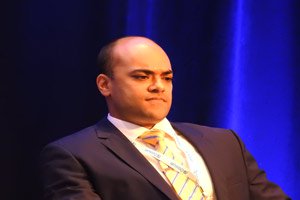PRP injection for UCL injuries linked with longer delay in return to play in baseball league pitchers
SAN DIEGO — Results presented at the American Orthopaedic Society for Sports Medicine showed Major and Minor League Baseball players with ulnar collateral ligament injuries who received platelet-rich plasma injections took significantly longer to return to throwing compared with players who only underwent a traditional, nonoperative rehabilitation program.

Aakash Chauhan , MD, and colleagues used the Health and Injury Tracking System database to identify Major and Minor League Baseball Players with grade 1, 2 or 3 UCL injuries. Researchers collected standard demographics, injury and return-to-play data for all players and compared outcomes among players who received PRP injections in addition to traditional nonoperative treatment vs. players who received traditional nonoperative treatment alone.
Players who received PRP had a significantly lower return-to-play rate, a longer time to return to throwing and a longer time to return to play, according to Chauhan.
“However, when we critically evaluated this and looked at the delay from the last throw to actually receiving the PRP injection, there is an expected delay in treatment which corresponded as well to the delay we saw in return to throwing, and one can expect in turn this probably propagated down the road in terms of delay in return to play as well,” he said.

Survivorship analysis showed after 2 years less than half of players’ native UCL survived nonoperative treatment, with no significant difference between treatment groups. Chauhan noted patients in the PRP group were significantly older and had a significantly higher representation in Major League Baseball players.
“Looking at outcomes by player position, position players had significantly higher return-to-play and lower surgical rates with nonoperative treatment overall compared to pitchers,” Chauhan said.
He noted position players who received PRP had a significantly lower return-to-play rate and a higher surgical rate; however, analysis showed no significant differences with pitchers. – by Casey Tingle
Reference:
McQueen PD, et al. Abstract 130. Presented at: American Orthopaedic Society for Sports Medicine Annual Meeting; July 5-8, 2018; San Diego.
Disclosure: Chauhan reports no relevant financial disclosures.








